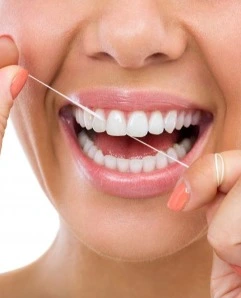-
Mon-Thur: 9AM - 5PM
6108763300

A stunning smile is a window to your general health and well-being, not merely something that looks good. Like any other body area, your mouth needs regular cleaning and upkeep to function properly. Frequent dental hygiene routines, including brushing and flossing, are essential for averting cavities, gum disease, and foul breath, among other dental issues.
Brushing your teeth twice daily, ideally in the morning and before bed, forms the foundation of good oral hygiene. Here's a step-by-step guide to ensure you're brushing effectively and reaping the maximum benefits:
1. Choosing the Right Tools:
Toothbrush: Choose a toothbrush with soft bristles that fits snugly in your mouth and cleans every surface of your teeth. To protect your gums, look for brushes with rounded bristles. Take into account the brush head's dimensions; if your mouth is smaller, a smaller head may be easier to manoeuvre around your teeth.
Manual vs. Electric: When used properly, both manual and electric toothbrushes can be quite effective. People who struggle to brush for the necessary length or who have limited dexterity may find electric toothbrushes especially useful. It has been demonstrated that electric brushes with rotating-oscillating heads are superior to other models in terms of their ability to remove plaque.
2. Applying Toothpaste:
Amount: Use a pea-sized amount of toothpaste that has been fluoridated. A mineral called fluoride plays a vital role in preventing cavities by strengthening tooth enamel.
Fluoride considerations: Although the majority of toothpastes sold in stores contain fluoride, you should speak with your dentist to determine the right amount to use, especially for young children and those with special needs.
3. Brushing Technique:
Angle the brush: To clean the surfaces of your teeth, hold the brush at a 45-degree angle against your gum line and apply short, soft strokes. A sawing action should be avoided as this can harm your teeth enamel and gums.
Brushing systematically: Separate your mouth into four regions (upper left, lower right, lower left, and upper right), and spend at least 30 seconds brushing each one. This guarantees that you are washing every tooth and gum surface for the proper amount of time.
Reaching all surfaces: The backs of your teeth and your tongue are additional areas where bacteria can grow and cause gum disease and bad breath. Make light motions back and forth with your tongue to clean it.
4. Brushing Time Matters:
Aim for two minutes: Most dentists recommend brushing for a total of two minutes, twice a day. If you find it challenging to keep track of time, many electric toothbrushes have built-in timers, or you can use a timer on your phone.
5. Rinsing and Completing the Routine:
To get rid of any last bits of food particles and toothpaste, properly rinse your mouth with water after brushing. Although mouthwash can be used in addition to brushing and flossing, these two important hygiene routines shouldn't be replaced by it.
Although brushing is necessary, only roughly 60% of your tooth's surface can be cleaned. Flossing is essential for getting into the little crevices between your teeth, where food particles and plaque can build up and cause gum disease and cavities. Here's how to properly floss:
1. Choosing the Right Floss:
Use whichever floss is easier for you to slide between your teeth: waxed or unwaxed. While waxed floss can be easier to slip between crooked teeth, unwaxed floss might be more efficient in removing plaque.
If you have trouble handling floss with your fingers, especially if you have dexterity issues, think about using a floss holder.
2. Flossing Technique:
Cut a strand of floss that is about 18 and 20 inches long.
Wrap the floss around your fingers: Tighten the ends of the floss around your middle fingers, making sure to leave a 1-2 inch gap between each hand's thumb and index finger.
Gently guide the floss: Move the floss up and down the sides of each tooth by sliding it gently between two teeth and using a sawing motion. Take care not to snap the floss against your gums as this may lead to bleeding and inflammation.
Curve and clean: Form a C-shape around the base of each tooth, then carefully glide the floss up.
Hence, You will have no trouble obtaining and keeping a confident, healthy smile if you include these easy yet powerful brushing and flossing procedures into your daily practice. Remember that consistency is essential! Prioritize maintaining good oral hygiene, and make time for routine dental examinations and cleanings to guarantee that your smile is not only radiant but also healthy and free of potential issues.
